Understanding the Role of ABA in Behavior Management
Applied Behavior Analysis (ABA) is a scientifically validated approach that has become the gold standard for addressing challenging behaviors, including aggression, in children with autism spectrum disorder (ASD). By focusing on understanding the root causes of behaviors and implementing targeted interventions, ABA fosters improved communication, social skills, and adaptive behaviors, ultimately enhancing quality of life for children and their families.
The Fundamentals of ABA Therapy in Behavior Management
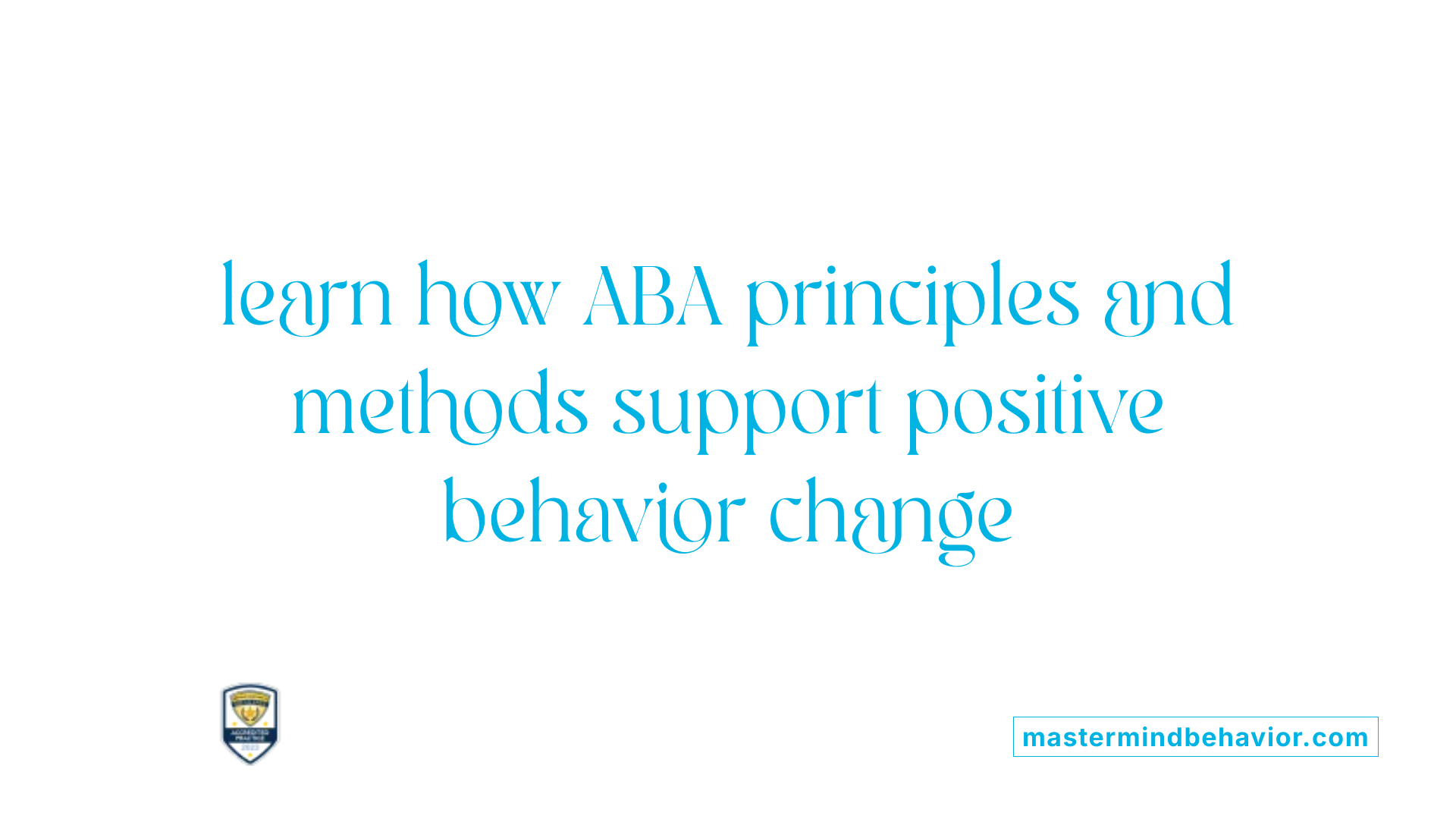
Why is ABA therapy considered relevant in managing behaviors in children with autism?
ABA therapy, or Applied Behavior Analysis, is a cornerstone treatment for children with autism spectrum disorder (ASD). It is grounded in scientific research and focuses on understanding how behaviors occur and how they can be changed. Through environmental modifications, ABA helps children acquire skills like communication, social interaction, and independence. Simultaneously, it aims to reduce challenging behaviors such as aggression and self-injury by using positive reinforcement strategies.
ABA is highly personalized, with plans tailored to each child's specific needs, strengths, and interests. This individual approach enhances the effectiveness of the therapy, leading to meaningful improvements.
Extensive studies support ABA's effectiveness, especially when started early and delivered consistently. It not only manages problematic behaviors but also promotes learning and development.
In essence, ABA therapy provides a structured, evidence-backed framework that helps children with autism behave more adaptively and thrive in their daily lives.
What are the main Principles of ABA?
ABA principles include reinforcement, punishment, and extinction.
- Reinforcement (most commonly positive reinforcement): Rewarding desirable behaviors to encourage their recurrence.
- Punishment: Applying or removing stimuli to decrease undesirable behaviors, used sparingly.
- Extinction: Reducing behaviors by discontinuing reinforcement.
Positive reinforcement involves giving a child praise or a tangible reward when they behave appropriately, which increases the likelihood that the behavior will happen again.
Which Methods Are Used in ABA Therapy?
ABA employs various strategies to modify behavior:
| Method | Description | Purpose |
|---|---|---|
| Visual Supports | Use of pictures, charts, or visual cues | Help children understand expectations and routines |
| Token Economies | Earning tokens for desired behaviors, exchanged for rewards | Motivates and reinforces positive behaviors |
| Time-out | Temporarily removing access to reinforcement | Decreases disruptive behaviors |
| Antecedent Interventions | Environmental modifications like visual cues and choice options | Prevent behaviors before they start |
| Differential Reinforcement | Reinforcing specific desired behaviors while ignoring others | Promote alternative responses |
| Data Tracking | Recording behaviors and responses over time | Monitor progress and adjust strategies |
These methods, combined with consistent application and data collection, support children’s development and behavior management.
What Are the Goals of ABA in Managing Aggression?
ABA aims to reduce aggressive behaviors by understanding their root causes and triggers. Many aggressive behaviors stem from communication challenges, sensory overload, frustration, or environmental stressors.
Strategies include:
- Conducting Functional Behavior Assessments (FBAs) to pinpoint triggers.
- Implementing environmental adjustments like calming routines and visual supports.
- Teaching children alternative ways to express needs, such as using words or pictures.
- Reinforcing positive behaviors to replace aggression.
- Using consequence-based strategies like differential reinforcement and extinction.
In addition to behavior modification, ABA encourages teaching social skills, emotional regulation, and communication, which diminish frustration and aggression over time.
In sum, ABA therapy offers a comprehensive approach that combines assessment, skill development, and behavior management to help children with autism manage aggressive behaviors and improve their overall quality of life.
Core Principles and Techniques of ABA for Managing Aggression
Applied Behavior Analysis (ABA) employs several foundational principles to effectively manage aggression in children with autism. Central to this approach is conducting a Functional Behavior Assessment (FBA), which helps identify what triggers aggressive behaviors. These triggers might include environmental stressors, communication frustrations, or sensory overload. By understanding the purpose behind the behavior, therapists can develop targeted interventions.
One of the main strategies involves reinforcement—particularly positive reinforcement—where desired behaviors are rewarded to encourage their recurrence. For example, a child might receive praise or a preferred item when they express frustration via words instead of aggression. Conversely, reinforcement of alternative behaviors and extinction of aggressive actions help reduce aggressive responses over time.
Data collection and analysis are vital components of ABA. Therapists record behaviors, triggers, and responses to assess progress accurately. This ongoing monitoring allows adjustments to be made based on what the data reveals about what works best for the individual child.
In terms of behavior intervention strategies, ABA integrates various techniques. Discrete trial training and environmental modifications can teach children new skills and reduce triggers. Differential reinforcement involves reinforcing desirable behaviors while withholding reinforcement from aggressive ones. When appropriate, punishment procedures may be used sparingly under professional supervision to discourage aggression.
Overall, ABA's structured and evidence-based approach aims not only to decrease aggressive behaviors but also to build social, communication, and self-regulation skills—essential for improving the child's quality of life and fostering independence.
Assessing and Monitoring Progress in ABA for Aggression Reduction
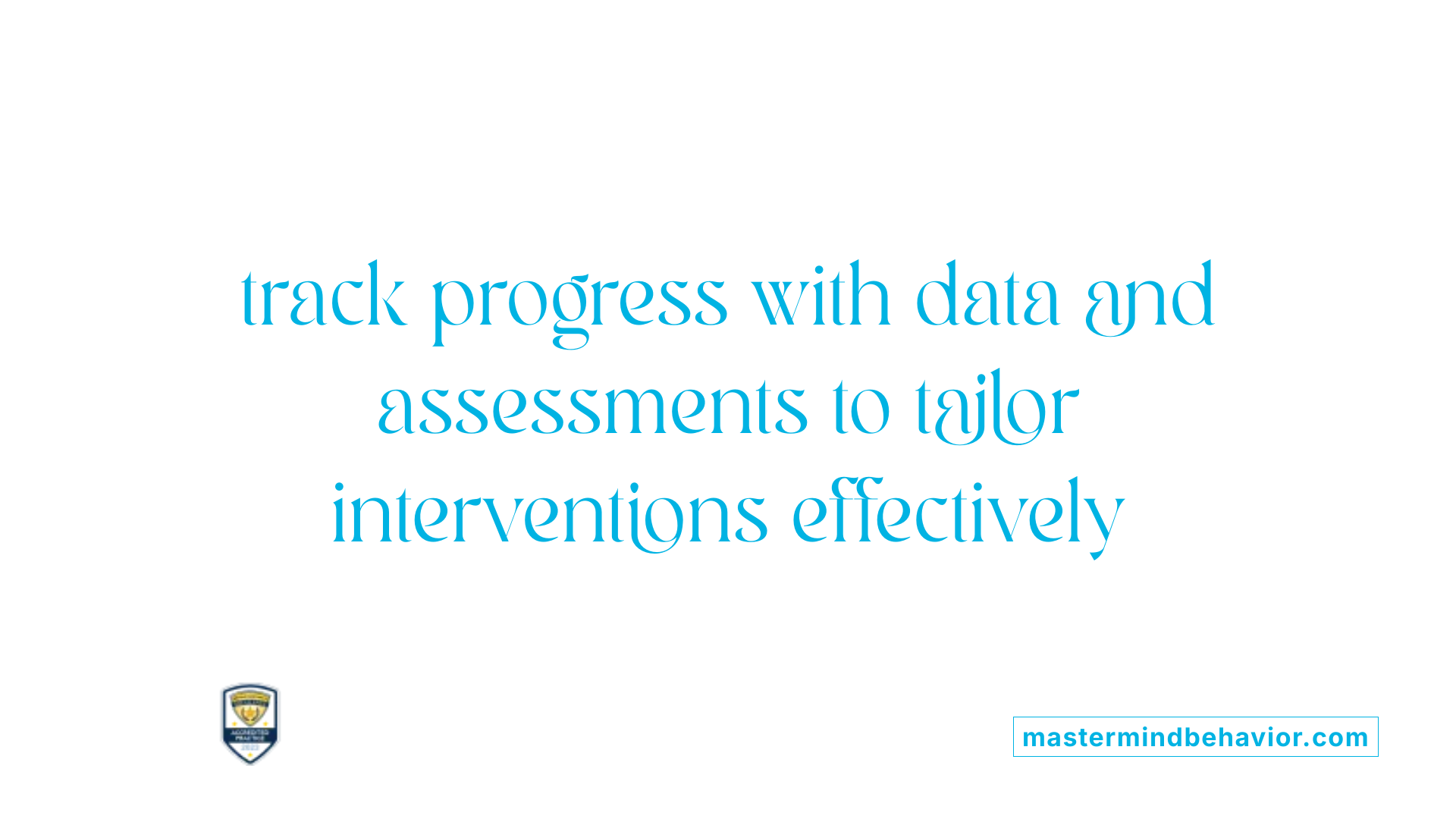
What assessment and management strategies within ABA help in reducing aggression?
Reducing aggression through ABA involves a combination of thorough assessment and targeted interventions. One of the primary tools is the Functional Behavior Assessment (FBA), which helps identify the root causes or triggers of aggressive behaviors. By analyzing the circumstances that lead to aggression, clinicians can develop more effective, personalized plans.
Based on insights from FBAs, individual Behavior Intervention Plans (BIPs) are created. These plans emphasize positive reinforcement, encouraging children to engage in appropriate behaviors to replace aggressive ones. They also include teaching functional communication skills—such as using words, pictures, or gestures—to help children express their needs more effectively.
Environmental modifications form a core part of behavior management. Visual supports, timers, and neutral redirection techniques help children anticipate routines and prevent triggers. Social skills training and coping strategies are also integrated to help children manage their emotions and reduce frustration.
Active involvement of caregivers is crucial. When caregivers are trained to implement strategies consistently across home and community settings, children are more likely to develop new, positive responses. Reinforcing behaviors that promote self-control and cooperation, while systematically reducing aggressive responses, leads to meaningful progress in managing autism-related aggression.
Understanding Triggers and Causes of Aggression
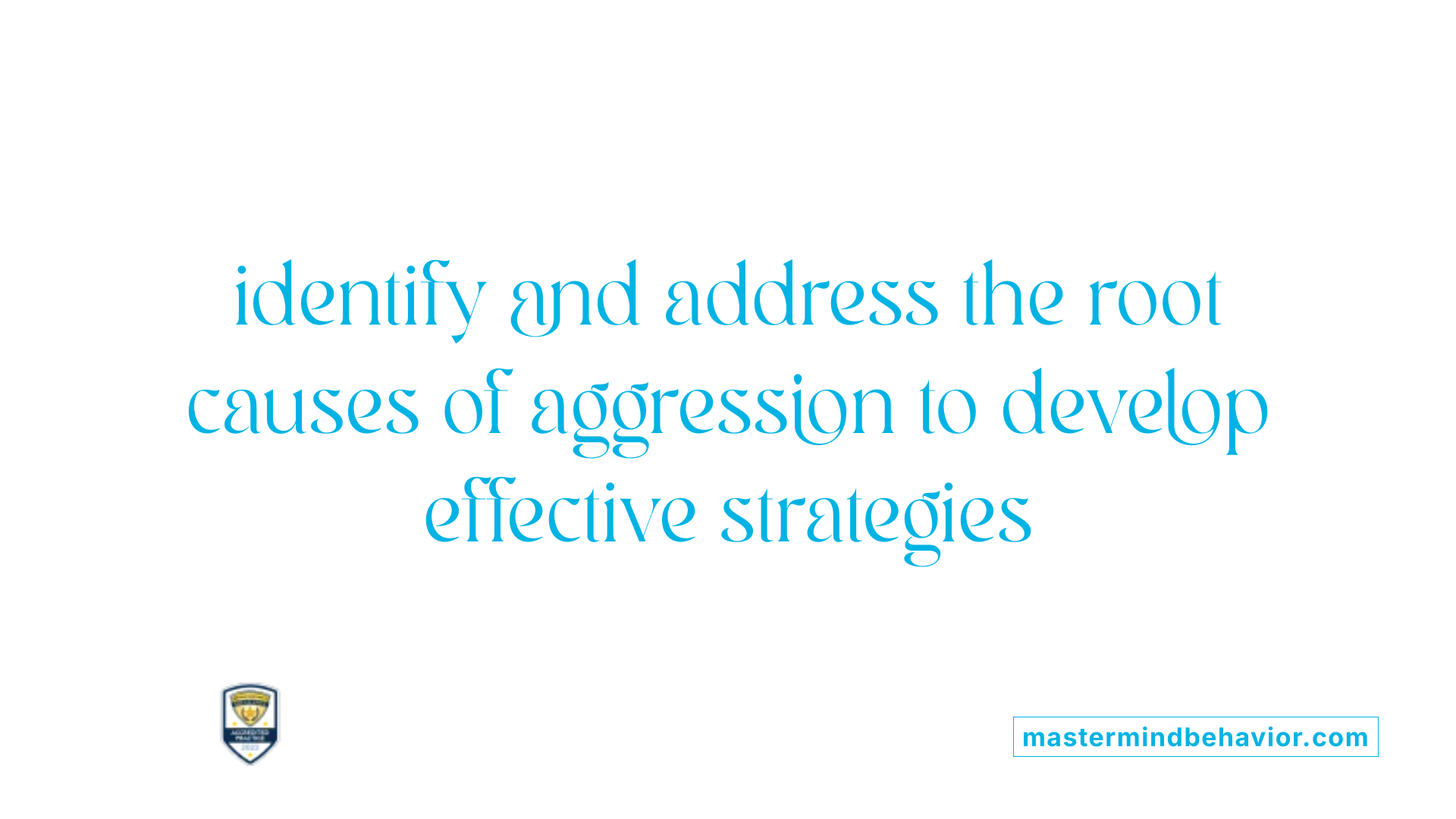
What are common causes of aggressive behaviors in children with autism, and how does ABA therapy address them?
Aggressive behaviors in children with autism can stem from several underlying causes. Medical issues such as pain, discomfort, or other health problems often contribute to irritability and aggression. When children experience physical discomfort, they may not be able to communicate their needs effectively, leading to aggressive responses.
Communication challenges are another major factor. Many children with autism have limited verbal skills, making it difficult for them to express their needs or frustrations. This inability to communicate effectively can result in behaviors like yelling, biting, or hitting as an alternative means of expression.
Environmental stressors and sensory overload also play a significant role. Changes in routine, bright lights, loud noises, or unfamiliar settings can overwhelm a child, triggering aggressive reactions. In addition, high demands or tasks that are too difficult without adequate support can cause frustration and escalate into aggression.
Understanding the function of aggressive behaviors is essential. Typically, these behaviors serve purposes such as seeking attention, escaping from overwhelming situations, or obtaining sensory stimulation.
ABA therapy tackles these issues through comprehensive approaches. Functional Behavioral Assessments (FBAs) are used to identify what triggers aggression and the purpose it serves. Based on these insights, Behavior Intervention Plans (BIPs) are developed, which include strategies like teaching alternative communication methods, such as using pictures or words to express needs.
Reinforcement techniques play a crucial role. Positive reinforcement rewards appropriate behaviors, encouraging children to respond differently to triggers. Visual supports, predictable routines, and sensory regulation tools help create a calming environment, reducing the likelihood of aggressive episodes.
In some cases, medical interventions like medication (e.g., risperidone or aripiprazole) are employed alongside ABA strategies, especially when aggression is severe and not easily managed through behavioral methods alone.
Overall, by addressing medical, communication, and environmental factors, ABA therapy reduces the frequency and severity of aggressive behaviors, helping children develop more appropriate ways to manage their emotions and needs.
Practical Strategies and Environment Modification to Reduce Aggression
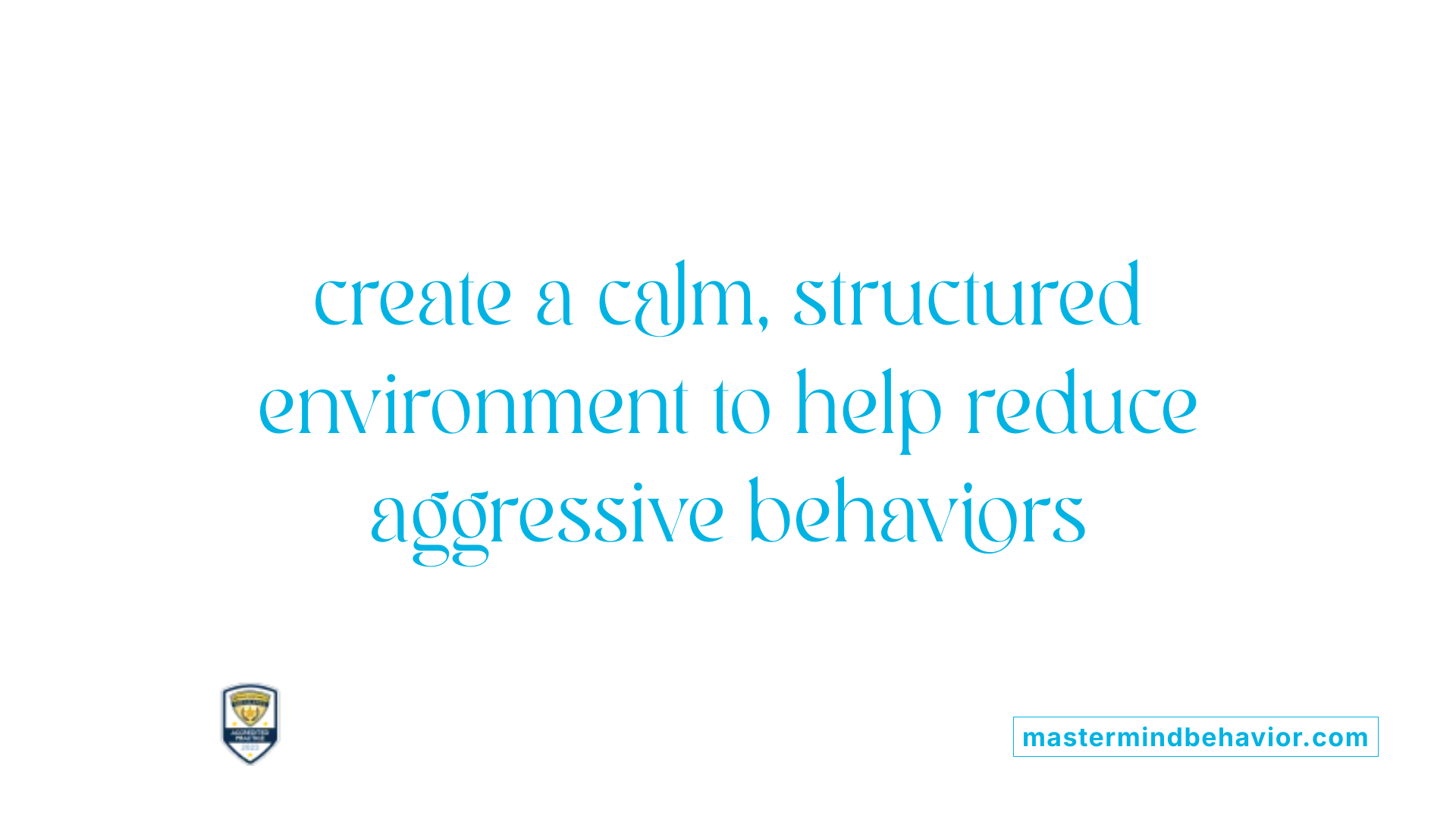
How does ABA therapy help reduce aggressive behaviors in children with autism?
ABA therapy reduces aggressive behaviors in children with autism by focusing on understanding the root causes or triggers of such behaviors through assessments like Functional Behavioral Assessments (FBA). These assessments analyze what prompts aggression, whether it’s communication difficulties, sensory overload, frustration, or environmental stress.
Once triggers are identified, ABA therapists develop personalized intervention plans that teach children alternative ways to express their needs and emotions. For example, children might learn to use words, pictures, or other communicative tools instead of acting out aggressively. The therapy also employs positive reinforcement strategies, rewarding desired behaviors—such as calmness or sharing—to encourage their recurrence.
Creating a structured routine with visual supports helps children predict what to expect next, reducing anxiety and confusion that can lead to aggressive outbursts. Visual schedules, cues, and timers are often used to make routines clear and manageable.
Caregivers are trained to implement these strategies consistently across settings. This consistency helps children learn appropriate behaviors and reduces frustration caused by unpredictable situations.
Overall, ABA’s data-driven approach targets the underlying causes of aggression, promoting skills that decrease the likelihood and severity of aggressive episodes. The result is improved emotional regulation, better communication, and a calmer, more predictable environment for children with autism.
The Impact of ABA Therapy on Skill Development and Quality of Life
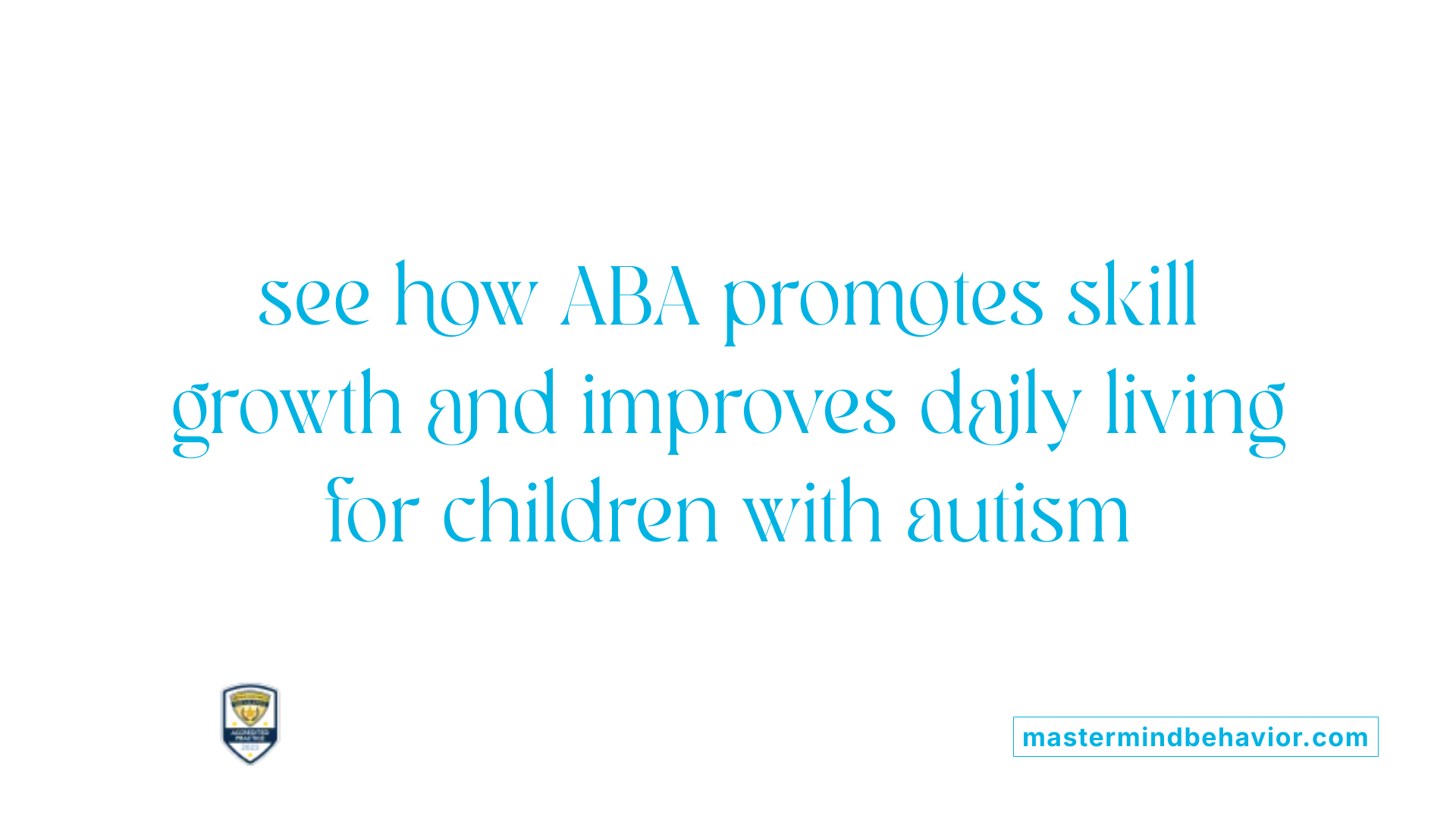
How effective is ABA therapy in decreasing aggressive behaviors in children with autism?
Applied Behavior Analysis (ABA) therapy is recognized as one of the most effective approaches to reducing aggressive behaviors in children with autism. When interventions are customized to each child's specific needs and consistently applied, significant improvements can be observed.
ABA therapy employs various techniques aimed at understanding and addressing the root causes of aggression. Conducting a Functional Behavior Assessment (FBA) helps identify triggers such as difficulty communicating, sensory overload, or environmental stressors. Once these are understood, therapists develop strategies like functional communication training, which teaches children alternative ways to express their needs.
Strategies such as environmental modifications, establishing routines, and using visual supports help prevent triggers from occurring. Reward systems like positive reinforcement encourage children to adopt more appropriate behaviors. Additionally, teaching coping skills—such as requesting a break or using words and pictures—enables children to manage frustration better.
Involvement of caregivers and regular adjustments to intervention plans are crucial. These efforts ensure that approaches stay relevant as the child develops and faces new challenges. In some cases, addressing underlying health issues or implementing medications may further enhance behavioral outcomes.
Overall, evidence shows that comprehensive ABA programs can lead to marked reductions in aggression, enabling children to develop better social and communication skills, which are essential for improved quality of life.
| Technique | Purpose | Methodology |
|---|---|---|
| Functional Behavior Assessment (FBA) | Identify triggers and causes of aggression | Observation, data collection, analysis |
| Functional Communication Training | Teach alternative communication methods | Use of pictures, words, gestures |
| Visual Supports & Routines | Create predictable environment | Charts, schedules, visual cues |
| Positive Reinforcement | Encourage desired behaviors | Praising, token systems, rewards |
| Coping Skills & Environmental Modifications | Manage frustration & overstimulation | Deep breaths, sensory breaks, choices |
Research indicates that when ABA therapy addresses the behavior’s functions and teaches alternatives, children experience fewer aggressive outbursts and develop essential skills for independence and social integration.
Conclusion: The Power of ABA in Transforming Behaviors
ABA therapy stands out as a scientifically supported, versatile, and personalized approach to managing aggression in children with autism. By conducting thorough assessments, understanding triggers, and applying evidence-based strategies like reinforcement, visual supports, and environmental modifications, ABA helps children learn healthier ways to express themselves and meet their needs. The active involvement of caregivers and professionals ensures consistency and ongoing progress, leading to reductions in aggressive behaviors and improvements in social, communication, and adaptive skills. Ultimately, ABA empowers children with autism to achieve greater independence and participate more fully in their communities, making it an essential component of effective behavioral management.
References
- Behavior Management in ABA Therapy: A Guide for Parents
- A Guide in ABA Therapy for Aggressive Behavior | Childwise
- How to Handle Aggressive Behavior in Children with Autism
- Autism Aggressive Behavior Strategies - Golden Care Therapy
- The Role of ABA Therapy in Managing Aggressive Behaviors
- ABA in the Treatment of Aggression and Impulse Control
- Reducing Aggressive Behavior in Children with Autism Using ABA
- Managing Aggressive Behavior in Adolescents With Autism ...
- Tips for Managing Aggression in Autism with In-Home ABA Therapy









